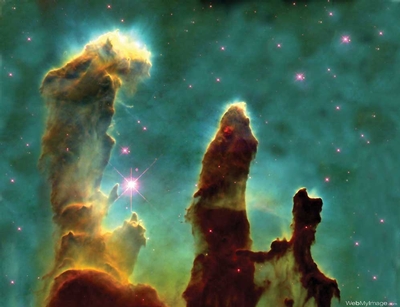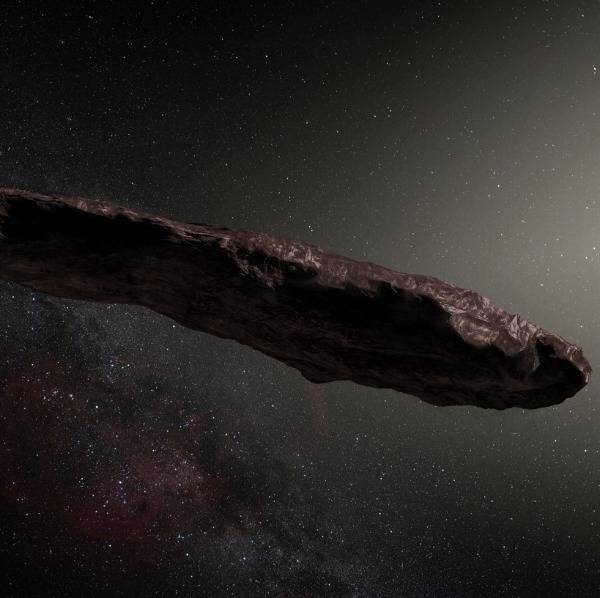
This photograph, known as “The pillars of creation”, was taken by the Hubble telescope on 1 April 1995. It shows the Eagle Nebula, 6,500 light years away in the constellation of Serpens. Why is it significant? Because this is where we come from.
Consider what we are seeing. Once upon a time, this was a cold, black, impenetrable cloud of choking interstellar gas and dust. Deep inside, hidden from the view of optical telescopes, stars recently began to congeal. But star formation is a self-limiting process. When the first massive stars to form – out of this image, to the north – “switched on” nuclear reactions in their hearts and became fully fledged suns, they illuminated their surroundings with ferocious ultraviolet light. This tore into the interstellar cloud, evaporating the gas and, in the process, inhibiting the formation of new stars. So, look at the image again.
The ultraviolet flooding down from the north has eroded the gas and dust southward. But, in a few places, some shrinking globules of gas are already too far down the road to becoming fully-fledged stars to be blown away. These EGGs – or Evaporating Gaseous Globules – offer resistance. They are holding their own. And behind them, to the south in the image, in what have become known as pillars but might be better described as windsocks, the dust and gas is protected – shadowed, if you like – from the ultraviolet wind screaming past.
Four and a half billion years ago, in a stellar nursery just like this, the Sun was born.

